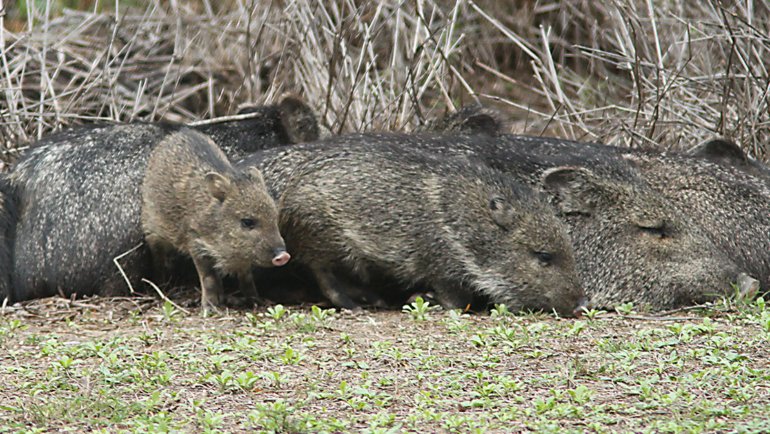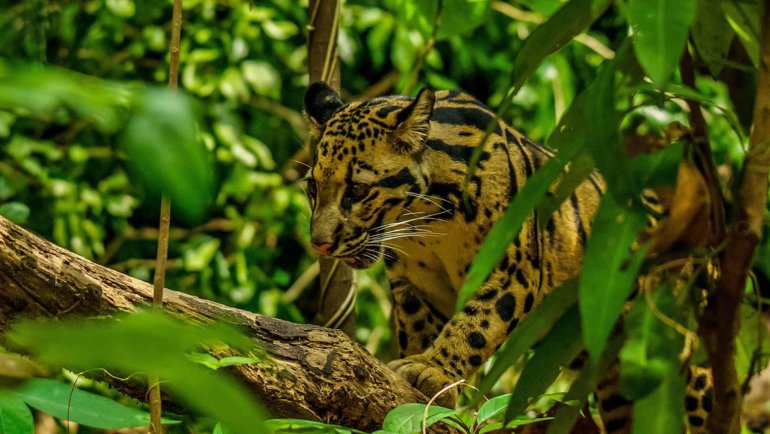Deers have a variety of vocalizations, and each one has a unique significance. However, it takes some practice to comprehend or interpret a certain deer sound and place it in its proper context.
Fortunately, this article will enable you to understand various vital deer sounds and what they mean.
Do Deer Make Noises?
Deer do make noises! Despite being generally quiet and elusive, these animals make different sounds to communicate with each other.
It’s essential to note that every deer makes a noise that serves a significant purpose. For instance, fawns bleat when separated from their mother or need attention.
Deer Sounds: What is Each Deer Sound Like?
These creatures make various sounds, which are essential communication tools, helping them establish social hierarchies, locate one another, and avoid danger in the wild.
Some of the most vital deer sounds include:
Grunting
It is a low, growling noise made by bucks to proclaim dominance and lure potential female partners during the mating/breeding (rut) period.
Bucks have a deeper grunt coming from the bottom of the throat while does and fawns grunt as a sign of alarm.
Bleating
It’s a sharp sound made by does and fawns. Does often bleat to locate their fawns or to call them back if they wander far away. Fawns also bleat when separated from their mother or in distress.
When it’s time for mating, the doe bleats for mating purposes and to attract potential mates by signaling that they are currently fertile and ready to breed.
Snorting
It’s a loud, volatile noise these creatures make when threatened. The vocalization is created by forcefully blowing air out of the nose. It helps the deer sense possible threats better.
Deer snort to warn others of potential danger or to startle a predator in an attempt to scare it from the vicinity.
Wheezing
When mating, the buck snort wheezes to establish dominance and intimidate other males. They frequently make this sound as part of a display of aggression, accompanied by a stiff-legged posture and lowered head.
Stomping
This sound acts as a warning signal to other deer of possible danger or a threat. When a deer senses danger or feels threatened, it may stomp its hooves repeatedly, producing a loud thumping sound.
This behavior also occurs during the rut (mating season) when males stomp their hooves to state their domination over others.
Rattling
These sounds are common during the rut. The buck uses its antlers to produce a series of rapid and repeated clicks, which creates a distinct sound that can be heard from a distance.
The rattling sound is a way for bucks to indicate their presence and readiness to mate and affirm dominance in their habitat.
Sniffing
The sniffing sound made by deer is a typical behavior that serves multiple purposes, including detecting food and predators, communicating with others, and expressing emotions.
Deer have an excellent sense of smell, and they use it when curious about their environment and want to explore their environs. For example, a doe may sniff at her fawn to signal that it’s time to move or to warn it of probable danger.
Similarly, they sniff loudly as a sign of agitation or annoyance or softly as a sign of contentment or relaxation.
Deer Sounds at Night
Generally, deer are quiet animals, and they typically avoid making loud noises that could draw attention to themselves.
However, the Muntjac species, also known as the “barking deer,” make loud noises when they become scared. These barking sounds increase at night when the deer are more vulnerable to danger and hide in shadows to avoid death.
What Does a Baby Deer Sound Like?
A baby deer or fawn will utter a high-pitched, nasal sound when it is first born. It makes this noise to let its mother know what’s going on so she can locate it regardless of whether it’s dark. The fawn will start producing a deeper sound, more like a grunt, as it ages.
How Do Deer Communicate?
The creatures communicate through various means, which include:
1. Body language
Deers use different body language gestures to communicate. For instance, it may raise its tail to signal that it has detected danger, raise its ears, or lower its head to show aggression or assert domination.
2. Vocalizations
Bucks may grunt or roar during the rut to attract does or to establish supremacy over other males. Fawns bleat to signal their need for help and snort to warn other deer of a potential threat.
3. Scent Marking
These creatures use scent markings to mark their territory. Bucks will rub their antlers against trees and bushes to leave a scent behind, which signals their dominance in that habitat.
Why Do Deer Stomp Their Feet?
These majestic creatures may stomp their feet to converse with others. Here are some possible reasons why deer stomp their feet:
1. Warning Signal
When these species detect a potential threat, they may stomp their feet to warn others. The repeated thumping sound can alert other deer of possible danger or indicate that the animal is ready to flee or fight if necessary.
2. Irritation or Agitation
Deer may also stomp their feet if they feel irritated or agitated by flies or other insects. They also stomp when they are in a stressful situation, such as being trapped or cornered.
Frequently Asked Questions
What Sound Does a Deer Make When Scared?
When scared, deer produce a loud snort to warn other deer in the area. It is a sharp nasal sound made by forcefully expelling air through the nostrils, alerting other deer of a potential threat, such as a predator or human, which can cause the entire herd to flee the area.
In addition, a scared deer may also exhibit other signs of fear or stress, such as a raised tail, raised ears, and a stiff, tense body posture.
How Far Can a Deer Hear a Grunt Call?
A deer can likely hear a grunt call from a few hundred yards or more (approximately one kilometer away/ half a mile or 125 yards).
While grunt calls can effectively attract deer or converse with them at close range, their effectiveness at longer distances may be more limited and can vary depending on various factors.
However, it’s vital to note that deer may fail to respond to a grunt call if they are preoccupied with other activities or too far away to detect the sound. Additionally, other factors, such as wind direction and the caller’s location, may also affect the effectiveness of a grunt call.
How Often Does a Doe Bleat?
The length of time it takes for a doe to bleat can differ, depending on the condition and the reason for the bleat. When communicating with its offspring, a doe will bleat when it notices that her calf is not close and wants to locate it.
However, does that don’t have young fawns are known to bleat more than three times a day during the rut season to attract the most suitable males to mate with. This sound is referred to as an ‘estrus bleat.’ A buck will interpret this sound as a sign that a doe is ready and will approach to assess her.
Do Deer Blow at Other Animals?
Deer blow or snort indicates fear of other animals’ presence or to establish their dominance over other smaller/inferior animals.
Sometimes, deer may blow at other animals out of curiosity or confusion, especially if they encounter a creature they haven’t seen before, such as a domestic animal or a human.
Do Deer Sound Like Cows?
A deer’s sound is different from a cow’s. Deer are ungulates belonging to the Cervidae family, whereas cows are mammals from the Bovidae family. Therefore, deer and cows have different sounds.
While a deer’s grunt and a cow’s calf sound may have some similarities, there are differences in tone and depth that make them distinguishable.
Final Thoughts
Deer are fascinating mammals that use various sounds to communicate with each other. Although the meaning can vary depending on the situation, the most common reasons deer make these sounds are; to warn their fellow species of any dangers present, to assert dominance, to make a mating call, or due to curiosity.



